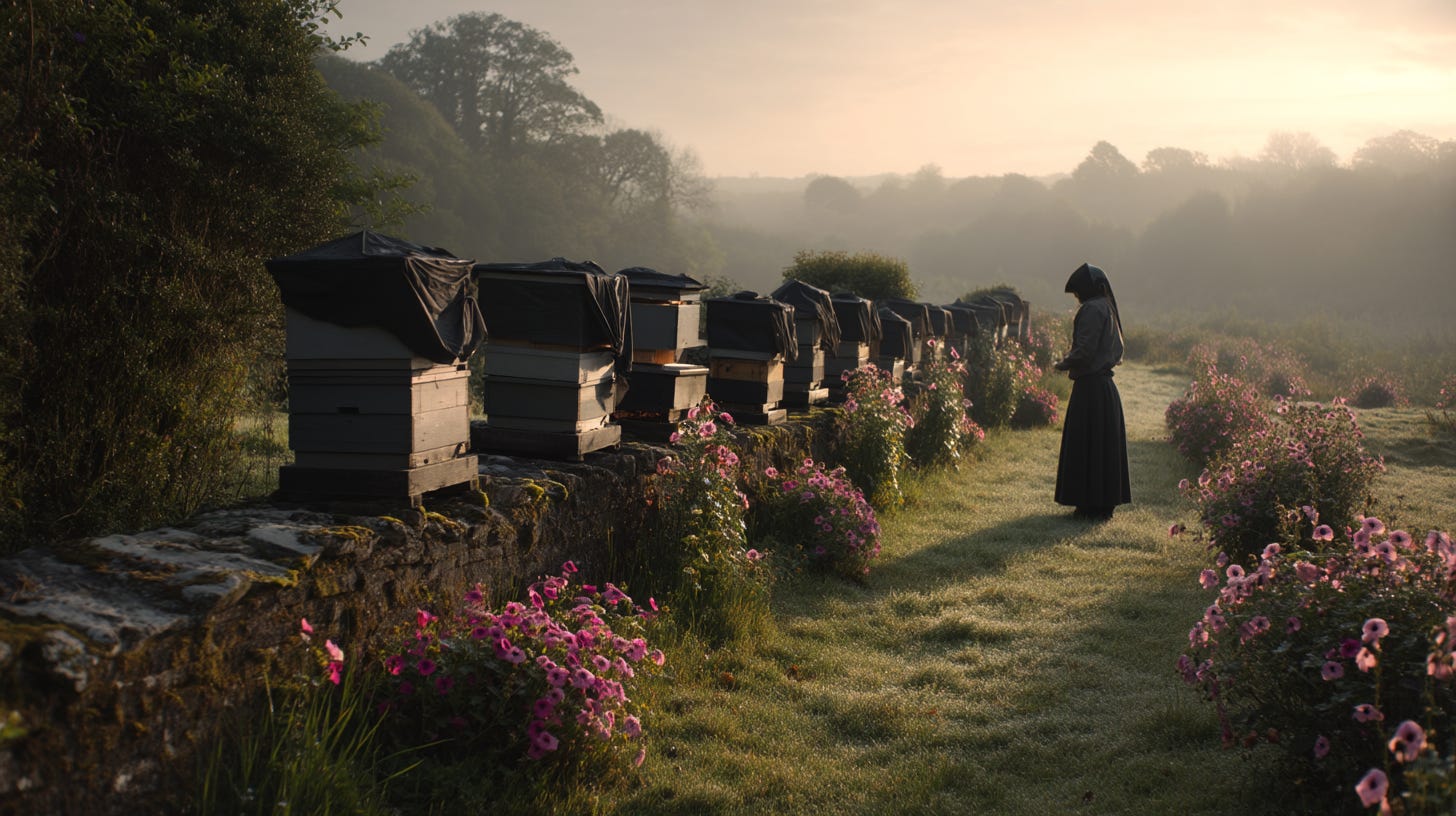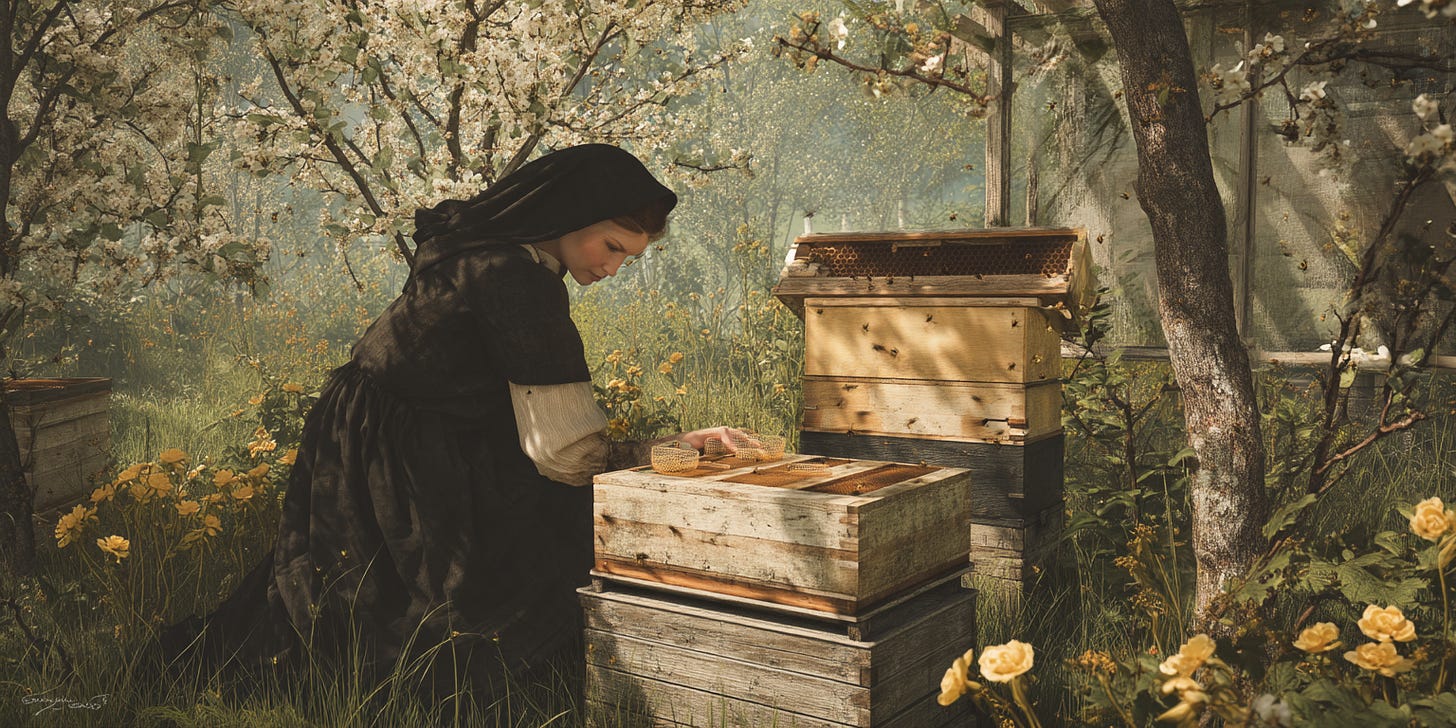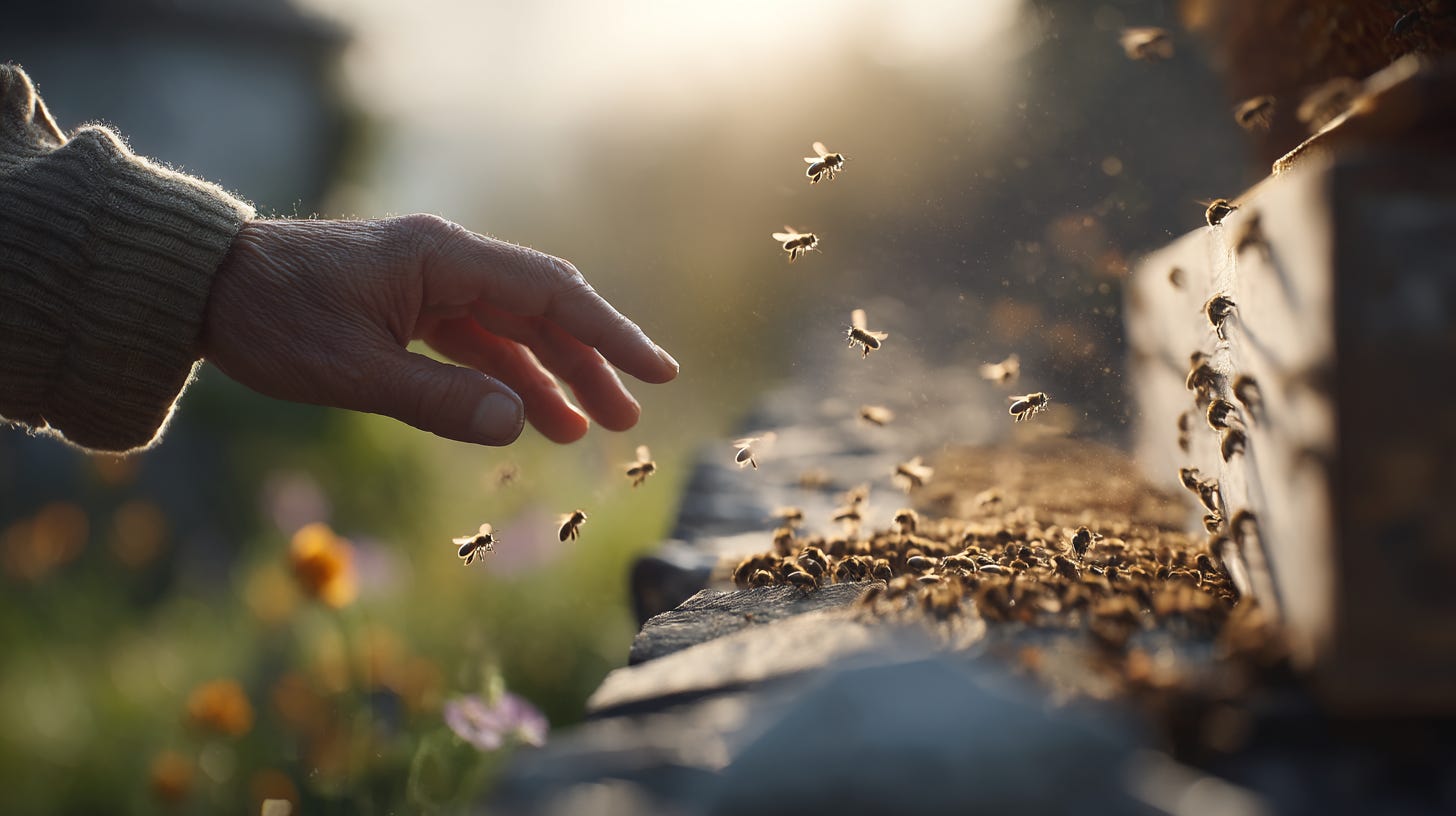The Telling of the Bees
A Quiet Tradition of Connection, History, and Returning Home
As spring stretches her limbs and begins to warm the earth, something stirs in the apiary. In just a few short weeks, many of us will once again lean in close, draw a breath, and whisper to the bees.
"Telling the bees" is a centuries-old tradition, particularly observed in parts of England, Wales, and New England. The practice involves informing beehives of significant life events, especially deaths, marriages, and births. The origins of this custom are largely rural and date back to at least the 18th century, though it likely existed in some form long before that. American poet John Greenleaf Whittier beautifully captured this tradition in his 1858 poem Telling the Bees (below), where a mourner finds a young girl draping the hives in black and softly singing to them, announcing the death of a woman named Mary., and the historian Charles Fitzgerald Gambier Jenyns mentioned the tradition in his 1886 book, A Book About Bees: Their History, Habits, and Instincts.
In many parts of rural England and colonial America, it was believed that if the bees were not told of a death in the family, they would become distressed, stop producing honey, or even leave the hive altogether. The custom often involved draping the hives in black cloth and speaking directly to the bees in a calm and respectful tone. In some cases, a piece of funeral cake would be left near the hive as part of the ritual.
While modern science doesn’t support any biological reason for such practices, the tradition reflects the deep respect and attention beekeepers historically paid to their bees. Beekeeping was not only a livelihood but a way of life, and the bees were considered an integral part of the household. This practice reinforced the bond between the keeper and the colony, emphasizing the importance of observation, care, and consistency.
Today, the ritual of telling the bees survives mostly as a cultural and historical curiosity, though some beekeepers still honor it in quiet ways. It's less about superstition and more about preserving a connection to a way of life that valued the rhythms of nature and the creatures that serve it.
So as April gives way to May, and you catch the first warm buzz of a forager returning home, consider the old ways. Lean in. Tell the bees—not because they need to know, but because it reminds us of where we’ve come from.
Personally, after five years away from my hives, I find myself eager to return to this practice. There’s something grounding about standing at the edge of a buzzing colony and speaking softly into the hum. I’ve missed the rhythm, the quiet attentiveness, and the shared space with these remarkable creatures. This spring, I’m looking forward to telling the bees once again—of where I’ve been, what I’ve learned, and how good it is to be back.
Stay rooted in the craft,
—Dan
Telling the Bees
Here is the place; right over the hill
Runs the path I took;
You can see the gap in the old wall still,
And the stepping-stones in the shallow brook.
There is the house, with the gate red-barred,
And the poplars tall;
And the barn’s brown length, and the cattle-yard,
And the white horns tossing above the wall.
There are the beehives ranged in the sun;
And down by the brink
Of the brook are her poor flowers, weed-o’errun,
Pansy and daffodil, rose and pink.
A year has gone, as the tortoise goes,
Heavy and slow;
And the same rose blows, and the same sun glows,
And the same brook sings of a year ago.
There ’s the same sweet clover-smell in the breeze;
And the June sun warm
Tangles his wings of fire in the trees,
Setting, as then, over Fernside farm.
I mind me how with a lover’s care
From my Sunday coat
I brushed off the burrs, and smoothed my hair,
And cooled at the brookside my brow and throat.
Since we parted, a month had passed,—
To love, a year;
Down through the beeches I looked at last
On the little red gate and the well-sweep near.
I can see it all now,—the slantwise rain
Of light through the leaves,
The sundown’s blaze on her window-pane,
The bloom of her roses under the eaves.
Just the same as a month before,—
The house and the trees,
The barn’s brown gable, the vine by the door,—
Nothing changed but the hives of bees.
Before them, under the garden wall,
Forward and back,
Went drearily singing the chore-girl small,
Draping each hive with a shred of black.
Trembling, I listened: the summer sun
Had the chill of snow;
For I knew she was telling the bees of one
Gone on the journey we all must go!
Then I said to myself, “My Mary weeps
For the dead to-day:
Haply her blind old grandsire sleeps
The fret and the pain of his age away.”
But her dog whined low; on the doorway sill,
With his cane to his chin,
The old man sat; and the chore-girl still
Sung to the bees stealing out and in.
And the song she was singing ever since
In my ear sounds on:—
“Stay at home, pretty bees, fly not hence!
Mistress Mary is dead and gone!”
-By John Greenleaf Whittier
Want to support the bees? Right now we are supporting our bees via selling beekeeping lessons and donations. Check out the education hub for info on lessons or make a donation via:





